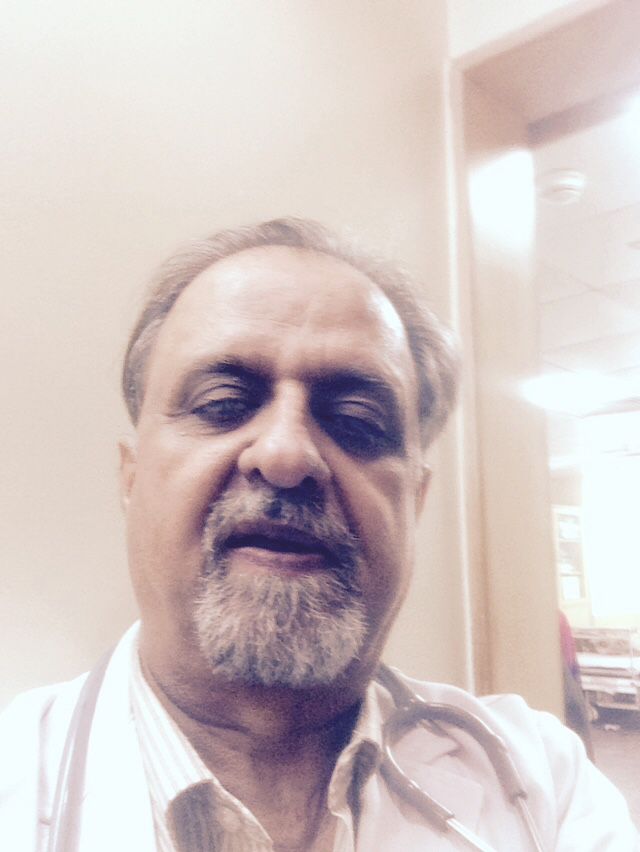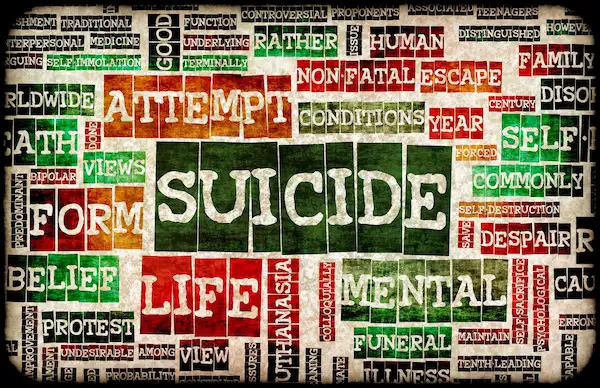Guide to Prevent Suicidal Attempts
Know about the prevention of suicidal attempts, understanding suicide, early signs, protective factors, risks, making a home safe, professional help and more.

Written by Dr. Siri Nallapu
Reviewed by Dr. Rohinipriyanka Pondugula MBBS
Last updated on 21st Oct, 2025

Introduction
Suicidal thoughts can feel overwhelming, but there are proven ways to prevent suicidal attempts and to help a person survive a crisis. Prevention is not only possible—it’s practical, stepwise, and something families, friends, and communities can do right now. In this guide, you’ll learn how to recognise early warning signs, have life-saving conversations, create a safety plan, make the home safer, and connect with treatments that reduce risk. We’ll cover tailored approaches for teens, LGBTQ+ individuals, older adults, and people facing chronic pain or postpartum changes. You’ll find examples based on research, scripts you can use today, and small protective habits that build resilience over time. If symptoms such as persistent low mood, hopelessness, or intense anxiety last beyond two weeks, consult a doctor online with Apollo24|7 for evaluation and next steps. If there’s immediate danger, call your local emergency number or a suicide helpline right away. Together, we can act early, respond confidently, and support recovery.
Consult a Top General Practitioner for Personalised Advice
Understanding Suicidal Thoughts and Attempts
Suicide is death caused by self-directed injurious behaviour with the intent to die. A suicide attempt is a nonfatal, self-directed behaviour with the intent to die. Suicidal ideation includes passive thoughts (“I wish I wouldn’t wake up”) and active thoughts (“I’m thinking of overdosing”). Non-suicidal self-injury (NSSI), such as cutting without intent to die, is different but still raises risk. Understanding these distinctions helps us prevent suicidal attempts by acting early and matching the right support to the right need.
Scope matters, Globally, the WHO estimates over 700,000 deaths by suicide each year, with many more attempts each a chance for intervention. Suicide is preventable, and multiple levels of action individual, family, community, and policy work together. CDC and WHO emphasise a public health approach: strengthen economic supports, promote connectedness, teach coping and problem-solving, identify and support people at risk, and limit access to lethal means.
A unique insight: Think of prevention like layers of a safety net. No single layer is perfect, but several together reduce the chance of a fall. One layer might be recognising warning signs; another might be secure medication storage; another is a safety plan and caring follow-up messages. Redundancy is protective.
Early Warning Signs: What to Notice and Why They Matter
Most people show some change before a suicide attempt, and noticing early warning signs can prevent suicidal attempts by prompting timely help.
Common signs include:
- Speech: Talking about death, feeling trapped, being a burden, or unbearable pain.
- Mood: Depressed, anxious, irritable, humiliated, or rageful.
- Behaviour: Increased substance use, withdrawing, researching methods, giving away possessions, reckless driving, or
sudden calm after distress.
Subtle signs often missed:
- Marked changes in sleep (too much/too little), appetite, or energy
- Dropping out of social plans or abruptly cancelling
- Making a will or settling affairs unexpectedly
- Fixating on news about suicide or methods
- Heavy engagement with self-harm content online
Act immediately when there are specific plans, access to lethal means, prior attempts, or sudden escalation in distress.
Ask directly: “Are you thinking about suicide?” Research shows asking does not increase risk and can reduce distress by
opening a path to help.
Risk and Protective Factors
Risk factors don’t cause suicide alone; they increase vulnerability, especially in clusters. They include mental health conditions (depression, bipolar disorder, schizophrenia), substance use, history of attempts, trauma, chronic pain, serious illness, social isolation, financial or legal stress, relationship loss, and access to lethal means. Minority stress and discrimination elevate risk for LGBTQ+ individuals.
Protective factors buffer risk: strong social connections; effective mental health care; reasons for living (children, pets, faith, goals); coping and problem-solving skills; limited access to lethal means; cultural and community supports; and a sense of belonging. Encouraging help-seeking and reducing stigma matters: when people believe help works and is accessible, attempts decrease.
Myths to challenge:
“Talking about suicide gives someone the idea.” False—asking directly can save a life. [3] “People who talk about it
won’t do it.” Many who die by suicide have communicated intent.
“If they’re determined, nothing helps.” Not true—crisis states are time-limited; making methods less accessible and
helping someone ride out the acute period often prevents attempts. [1,9]
Unique insight: Think in ratios. You can’t remove every risk, but you can outnumber them with protective actions one new connection, one locked cabinet, one skill learned, one therapy appointment shifting odds toward safety.
Safety Planning and Making the Home Safer
A safety plan (Stanley–Brown model) is a brief, written roadmap created collaboratively. Its six steps:
1) Warning signs: Personal cues that a crisis is building
2) Internal coping strategies: Activities you can do alone that bring relief
3) Social settings/people that provide distraction
4) People to ask for help
5) Professionals and agencies to contact
6) Means safety: Reducing access to lethal methods.
Lethal means safety is crucial. Many attempts are impulsive during short crises; if the most lethal method is not accessible, survival is far more likely.
Practical steps:
1. Medications: Lock all meds (including over-the-counter), keep only small weekly supplies, use
2. blister packs, and remove stockpiles.
3. Hazardous substances: Secure pesticides, cleaning agents, and poisons in locked storage.
4. Sharp objects: Consolidate and lock away, especially blades used for self-harm.
5. Firearms: Best practice is removing firearms from the home during risk periods. If not possible, store unloaded, locked, with ammunition locked separately, using tamper-resistant devices.
Professional Help That Works
Evidence-based therapies reduce suicide attempts:
1.Dialectical Behaviour Therapy (DBT) builds skills for emotion regulation, distress tolerance, and interpersonal effectiveness; it significantly lowers attempts in high-risk groups.
2.Cognitive Behavioural Therapy for Suicide Prevention (CBT-SP) and Brief Cognitive
3.Behavioural Therapy focus on identifying thought patterns, building coping plans; trials show reduced re-attempts.
4.Collaborative Assessment and Management of Suicidality (CAMS) centres on the patient’s drivers of suicidal thoughts and shared treatment planning.
Medications can help when conditions like depression, bipolar disorder, psychosis, or anxiety are present. Lithium reduces suicide risk in bipolar disorder; clozapine reduces risk in schizophrenia. Addressing underlying medical contributors (thyroid disorders, severe anemia, vitamin D or B12 deficiency, unmanaged pain) is important. If persistent low mood, sleep disruption, or hopelessness lasts beyond two weeks, consult a doctor online with Apollo24|7 for evaluation; they can also arrange convenient home collection for relevant tests (for example, thyroid profile or vitamin D) to rule out medical contributors. If there’s imminent risk, seek emergency care. [3–4,6]
Digital tools like Crisis text/chat lines, telehealth therapy, and safety planning apps can bridge gaps between sessions. Hospitalization may be needed for acute, imminent risk, especially with intent, plan, and means. Unique insight: Ask providers about “caring contacts”—short, supportive messages after visits—which research shows can reduce re-attempts. LSI terms: online therapy for suicidal thoughts; safety planning intervention effectiveness.
Tailoring Prevention for Specific Groups
Teens and young adults: Watch for school avoidance, bullying, risky online trends, and sudden academic changes.
Partner with school counsellors; teach coping plus digital literacy (muting harmful feeds, using supportive
communities). Family-based therapies and DBT skills help.
LGBTQ+ individuals
Affirming environments, pronoun respect, and family acceptance significantly lower risk. The Trevor Project reports
that LGBTQ+ youth with at least one accepting adult have lower odds of a suicide attempt. Connect to affirming care and peer spaces.
Older adults
Isolation, bereavement, chronic illness, and access to lethal means increase risk. Emphasise social connection, pain management, home safety (especially medications and pesticides), and routine check-ins.
Postpartum period
Rapid hormonal, sleep, and role changes can raise risk. Screen for postpartum depression and psychosis. Encourage
partners/family to monitor warning signs and secure medications. Seek urgent care if there are intrusive thoughts or psychosis.
Chronic pain
Integrated pain and mental health care reduces attempts. Balance pain regimens carefully, reduce sedative risks, and add behavioural pain interventions.
What to Do in a Crisis and After an Attempt
In a crisis:
1) Stay present, calm, and nonjudgmental.
2) Ask directly about suicide, plan, and access to means.
3) Remove or secure lethal means immediately (lock away medications and poisons; if firearms are present, remove
from the home temporarily or secure with multiple safeguards).
4) Contact a crisis line or emergency services; do not leave the person alone if an imminent risk is present.
5) If safe, begin a brief safety plan and identify one immediate coping step.
After an attempt:
1. Medical evaluation comes first. Once medically stable, ensure a thorough mental health assessment and a collaborative safety plan before discharge.
2. Arrange rapid follow-up (within 24–72 hours), ideally with “caring contacts” (brief messages expressing care and
inviting connection). Research shows caring contacts reduce re-attempts.
3. Address means safety as conditions change; keep safety measures in place during high-risk periods.
4. Families need support too: seek postvention resources and grief-informed care if a loss occurred.
Caring for Yourself as a Supporter
Supporting someone in crisis is meaningful—and taxing. Caregivers can experience anxiety, sleep disruption, and burnout. Protect your capacity:
1. Set realistic roles: You can offer connection and help coordinate care, but you’re not responsible for doing everything.
2 .Use a care team: Share tasks among friends/family (meds pickup, appointment scheduling, meal prep).
3. Practice small self-care: 10-minute walks, brief breathing exercises, and boundaries around late-night texting when
safe.
Persistent anxiety, intrusive fears, or depression that lasts beyond two weeks warrants professional support. Consider connecting with a therapist or consulting a doctor online with Apollo24|7 if stress feels unmanageable. Peer groups for families (online or local) can provide validation and practical tips. Unique insight: Keep a “supporter’s log”, a few lines each day, noting highs, lows, and one thing you did well. Over time, it counters the inner critic and sustains your efforts.
Conclusion
Preventing suicidal attempts is both compassionate and practical. By learning to spot early warning signs, asking direct questions, and responding with validation—not judgment—you create the first, crucial layer of safety. From there, a simple safety plan and a safer home environment can disrupt the most dangerous moments of a crisis. Evidence-based care, from therapies like DBT and CBT-SP to supportive follow-up, helps people move from surviving to recovering. Communities, workplaces, and schools play vital roles by training gatekeepers, normalising help-seeking, and adopting policies that reduce risk. If distress, hopelessness, or intense anxiety persist for two weeks or longer, consult a doctor online with Apollo24|7 for evaluation and guidance; if immediate danger is present, contact emergency services now. Progress often happens in small steps—a daily check-in, a locked cabinet, a scheduled appointment—and those steps add up. With informed action and steady support, hope can return, and lives can be saved.
Consult a Top General Practitioner for Personalised Advice
Consult a Top General Practitioner for Personalised Advice

Dr. Mainak Baksi
General Practitioner
13 Years • MBBS , MD (MPH)
Howrah
Mainak Baksi Clinic, Howrah
(50+ Patients)

Dr Divya Lekha Gunta
General Practitioner
10 Years • MBBS, MD (Pathology)
Visakhapatnam
Apollo 24|7 Clinic - Andhra Pradesh, Visakhapatnam

Dr. Rajib Ghose
General Physician/ Internal Medicine Specialist
25 Years • MBBS
East Midnapore
VIVEKANANDA SEBA SADAN, East Midnapore

Dr. Suvadeep Sen
Critical Care Specialist
12 Years • MBBS, MD, FNB (CRITICAL CARE MEDICINE), EDIC
Mumbai
Apollo Hospitals CBD Belapur, Mumbai

Dr Ajay Dhawan
General Practitioner
46 Years • MBBS.
Gurgaon
Dr Ajay Dhawan's Clinic, Gurgaon
Consult a Top General Practitioner for Personalised Advice

Dr. Mainak Baksi
General Practitioner
13 Years • MBBS , MD (MPH)
Howrah
Mainak Baksi Clinic, Howrah
(50+ Patients)

Dr Divya Lekha Gunta
General Practitioner
10 Years • MBBS, MD (Pathology)
Visakhapatnam
Apollo 24|7 Clinic - Andhra Pradesh, Visakhapatnam

Dr. Rajib Ghose
General Physician/ Internal Medicine Specialist
25 Years • MBBS
East Midnapore
VIVEKANANDA SEBA SADAN, East Midnapore

Dr. Suvadeep Sen
Critical Care Specialist
12 Years • MBBS, MD, FNB (CRITICAL CARE MEDICINE), EDIC
Mumbai
Apollo Hospitals CBD Belapur, Mumbai

Dr Ajay Dhawan
General Practitioner
46 Years • MBBS.
Gurgaon
Dr Ajay Dhawan's Clinic, Gurgaon
More articles from Suicide and suicidal thoughts
Frequently Asked Questions
1) How can I prevent suicidal attempts at home right now?
Remove or lock away medications, poisons, sharp objects, and firearms; keep only small medication supplies. Put crisis numbers on your phone’s lock screen and create a one-page safety plan. These steps reduce access during short, high-risk moments.
2) Does asking about suicide put the idea in someone’s head?
No. Research and clinical guidance show that asking directly does not increase risk and can reduce distress by opening a path to support. Use calm, caring language and listen without judgment.
3) What is a suicide safety plan template, and how long does it take?
A safety plan is a brief, written plan (often a single page) listing warning signs, coping strategies, people and places for distraction, contacts for help, and steps for lethal means safety. You can build it in 15–30 minutes with a friend, family member, or clinician.
4) Which treatments reduce suicide risk?
DBT, CBT for Suicide Prevention, and CAMS have evidence for reducing attempts. Address underlying conditions (depression, bipolar disorder, psychosis, substance use), and consider medical contributors like thyroid issues. If symptoms persist, consult a doctor online with Apollo24|7.
5) What should I do after someone returns home from the hospital?
Set up a 24-hour bridge plan: secure lethal means, supervise medications, schedule follow-up within 24–72 hours, use caring contacts (supportive messages), and keep the safety plan visible. Revisit the plan frequently as needs change.



